Learn more about our appointment options, second opinions, locations, referrals, and resources that are at your disposal.

Sarcoma Center of Excellence
About the Sarcoma Center of Excellence
Sarcoma is a rare type of cancer that occurs in the bones and soft tissues of the body. Soft tissues connect, support, and surround other body structures and include muscle, fat, blood vessels, nerves, tendons, and the lining of your joints.
The AHN Sarcoma Center of Excellence is made up of a team of multiple health care experts walking you through every step of your cancer diagnosis and treatment. At AHN, we strive to make your treatment course as painless as possible. We will manage appointment scheduling, imaging planning, and other aspects of care coordination so you have time to focus on healing and recovery.
Sarcomas account for 1% of adult cancer diagnoses a year with 4,000 bone sarcomas and 13,000 soft tissue sarcomas diagnosed annually. It makes up around 15% of cancer diagnoses in children.
Diagnosis and treatment will usually begin with our orthopaedic oncology team. The team works closely with providers in other medical specialties to provide a multidisciplinary approach to care. These other medical specialties may include:
- Surgeons
- Medical oncology
- Radiation oncology
- Pathology
- Physical therapy
- Occupational therapy
- Plastic surgery
- Nurse Navigators
With this coordinated care approach, these specialists are working in tandem to ensure you receive the highest level of care. Your treatment plan is designed to target your cancer and manage or reduce any side effects. We have groups of specialized doctors who meet at the Sarcoma Tumor Board regularly to discuss your care. These meetings serve to increase communication, coordination, and efficient care for our patients.
-
Appointments
Orthopaedic Oncology
Advancing technologies in radiation and systemic therapies
The goal of surgery is to remove your cancer with wide margins. This means that a larger section of healthy tissue is removed around the cancer to reduce the risk of it spreading. This will vary for each patient, and your AHN Care Team will tailor your care to your needs. Using the advanced technologies in radiation and systemic therapies at our disposal, we aim to remove your cancer and perform any necessary reconstruction that will help you heal faster and regain available function.
These advanced technologies may include:
- 3D printed custom cutting guides: These are patient-specific guides created using 3D printing based on the patient's imaging (CT/MRI). Surgeons use them during surgery to make precise bone cuts, ensuring accurate removal of the sarcoma and preserving as much healthy tissue as possible.
- Intraoperative CT and navigation: This involves using a CT scanner during the surgery, along with a navigation system (like GPS for the body). It allows surgeons to see real-time images of the surgical site, confirm the tumor is completely removed, and guide the placement of implants with greater accuracy.
- Custom bony reconstructions: If a large section of bone needs to be removed due to the sarcoma, a custom-made reconstruction can be created. This might involve a 3D-printed implant or a custom-shaped bone graft designed to precisely fit the defect left by the surgery, restoring function and stability.
- Size-matched allografts: These are bone grafts taken from a deceased donor (allograft). "Size-matched" means the donated bone is carefully selected to closely match the size and shape of the bone that was removed from the patient, improving the fit and integration of the graft.
- Individually selected implants: Surgeons choose implants that are best suited to the specific patient's anatomy, the location of the sarcoma, and the type of reconstruction needed. This could include specialized plates, screws, or joint replacements.
- Multidisciplinary approaches: Given the complex nature of sarcomas, specialists from different areas of medicine and care will work together to provide an all-encompassing approach to this treatment may include the areas of plastic surgery, vascular surgery, thoracic surgery, etc.
We work closely with medical oncology and radiation oncology to create a treatment plan tailored to your needs.
Your care does not stop when your treatment is complete. We continue to monitor our patients to optimize function and to monitor for signs of metastasis and recurrence for many years (10+) after treatment. We arrange regular imaging and follow-up appointments with different specialists involved in the orthopaedic oncology care team to ensure there are no changes in your health.
Sarcoma education
We offer great local programs that can provide information, support, and other services to those undergoing treatments and survivors in remission. Both resources also provide virtual and online resources for those with a sarcoma diagnosis.
Pittsburgh Cure Sarcoma Foundation
The most successful fundraiser for sarcoma in the country, the Pittsburgh Cure Sarcoma Foundation hosts fundraisers, educational outreach, an annual 5K in North Park, virtual beer tastings, and more. Joining means you gain a resource for patients and families in a community of people who understand sarcoma.
Cancer Bridges
Getting a sarcoma diagnosis can be scary. Cancer Bridges provides free programs and services to help you and your family navigate cancer, including sarcoma. From being diagnosed to supporting survivors. Virtual/online and in-person resources may help those with a sarcoma diagnosis.
Our programs
Using a multidisciplinary and comprehensive approach, the Sarcoma Center of Excellence is focused on providing programs that use the latest treatments and technologies available to care for those who have a sarcoma diagnosis.
Metastatic Disease to the Skeleton Program
Our Metastatic Disease to the Skeleton Program is devoted to taking care of patients with types of cancers — such as lung, prostate, breast, thyroid, and renal — that most commonly metastasize to bones. We take care to prevent and treat fractures because of those metastatic lesions. Sometimes they can overlap with metabolic disorders of the skeleton. Sometimes, infections can resemble tumors, so our program will also provide treatment to infected areas of the bone.
Aggressive Benign Bone and Soft Tissue Tumor Program
Our Aggressive Benign Bone and Soft Tissue Tumor Program treats a group of growths that, while not cancerous, display aggressive growth patterns and can cause significant problems. Benign tumors are not malignant (cancerous) and don't spread to other body parts (metastasize). Despite being noncancerous, these tumors grow quickly and can invade surrounding tissues, potentially damaging nearby structures like nerves, blood vessels, and even bone. Bone tumors originate in bone tissue, while soft tissue tumors develop in the tissues connecting, supporting, or surrounding other structures, like muscles, tendons, ligaments, fat, or blood vessels.
Treating sarcoma
Sarcoma is a general term for a broad group of cancers that begin in the bones and soft tissues. These masses can develop in any location in the body. Sarcomas are relatively uncommon and rare compared to other cancers, with an incidence of less than 1% of the adult population. Sarcomas can be up to approximately 20% of childhood cancers. Soft tissue sarcomas begin in the tissues that protect, connect, support, and surround other body structures. This includes muscles, fat, blood vessels, nerves, tendons, and the lining of your joints. There are many different subtypes of sarcomas, and they can develop in patients of all ages. By far, most sarcomas develop for no known reason and are rarely linked to inherited diseases.
The first step may involve working with radiologists and pathologists to obtain and establish an accurate diagnosis. A biopsy is a procedure where a radiologist obtains a sample of tissue that can be evaluated and tested to obtain an accurate diagnosis. During or after this time, we work with patients to schedule appropriate imaging that will be interpreted by our radiology team. Our patients will meet with our medical and radiation oncologists at the AHN Cancer Center to receive information about treatment options they may be able to provide. We are able to treat sarcomas in all ages including:
- Malignant bone tumors: osteosarcoma, chondrosarcoma, Ewings sarcoma, etc.
- Painful mass or pain with weight bearing/movement that may cause dysfunction
- Night pain
- Characteristic imaging findings
- Soft tissue tumors: undifferentiated pleomorphic sarcoma, liposarcoma, myxofibrosarcoma, etc.
- Painless, slow growing mass and often incidentally found
- Lack of constitutional symptoms
- Imaging can be very nonspecific
- Impending fracture/pathological fractures in setting of metastatic disease to the bone
Treatment options
Using our multidisciplinary approach to care, AHN coordinates each patients’ care to ensure they are seeing the specialists and health care providers who will be the most helpful in their care plan. These treatment options may include chemotherapy, immunotherapy, targeted therapy, and radiation therapy. After meeting with each member of the team, you’ll have the opportunity to talk with your AHN care team to map out the appropriate route of treatments before moving forward.
We will always provide the standard of care based on evidence-based medicine. Additionally, we realize that every patient and every situation is very different and always aim to tailor care to each individual. Every treatment option and choice is made with the specific individual in mind. We understand the importance of not just providing cancer treatment, but whole-person treatment. Our patients will get the latest technologies and newest therapies, while also getting psychosocial help, physical and occupational therapies, nutritional support, assistance with scheduling and appointments, and much more.
Orthopaedic oncology surgeon
An orthopaedic oncology surgeon diagnoses, treats, and manages bone and soft tissue tumors. This includes both benign (noncancerous) and malignant (cancerous) tumors. They are trained in both orthopaedics (bones and joints) and oncology (cancer). Learn more about orthopaedic oncology.
An orthopaedic oncology surgeon can help you with:
- Wide excision of primary tumors
- Reconstruction of bone/soft tissue defects after resection
- Prevention of pathologic fracture
- Prophylaxis/fixation of pathological fractures
- Surveillance for local recurrence of tumors
- Coordination of care between specialties
Medical oncologist
Our medical oncology division specializes in the diagnosis and treatment of cancer using chemotherapy, hormonal therapy, biological therapy, and targeted therapy.
A medical oncologist can help you with:
- Neoadjuvant (before surgery) and adjuvant (after surgery) chemotherapies
- Medical therapies available for nonoperative treatment route
- Surveillance of distant/metastatic disease
Radiation oncology
Our radiation oncology division specializes in treating cancer using radiation therapy. They use high-energy rays to destroy or damage cancer cells, aiming to cure or control the disease.
A radiation oncologist can help you with:
- Neoadjuvant (before surgery) radiation therapy
- Adjuvant (after surgery) radiation therapy
- Use of radiation to treat pain or prevent fractures
Radiologists
A radiologist is a medical doctor who specializes in diagnosing and treating diseases and injuries using medical imaging techniques.
A radiologist can help you with:
- Interpreting imaging
- Providing insight into surgical planning
- Monitoring/surveillance imaging
Pathologist
A pathologist is a medical doctor who studies the causes, nature, and effects of diseases. They are experts in diagnosing diseases by examining tissues, cells, and bodily fluids.
A pathologist can help you with:
- Examining samples of tumor tissue under a microscope to determine the diagnosis and grade of tumor
- Confirming margin status after excision
Plastic surgeon
Surgeons from our plastic surgery division are integral members of the sarcoma care team, playing a crucial role in both the surgical removal of tumors and the subsequent reconstruction of affected areas. Their expertise is particularly valuable in achieving the best possible functional and cosmetic outcomes for sarcoma patients.
A plastic surgeon can help you with:
- Soft tissue reconstruction (skin grafts, tissue flaps, etc.)
- Complex wound closure
Physical and occupational therapists
Physical and occupational therapists play vital roles in helping sarcoma patients regain function, mobility, and independence throughout their cancer journey. Their expertise is particularly crucial during and after treatment, addressing the physical limitations and challenges that sarcoma and its treatments can cause.
A physical and occupational therapist can help you with:
- Recovery from surgery
- Strengthening your muscles and improving mobility
- Returning to functional status so you can continue activities of daily living
Other supporting teams
You may need additional support from teams that we do not often work with:
- Oncology rehabilitation
- Lymphedema therapy
- Pain management
Sarcoma specialists
Given the rarity of sarcoma diagnoses, finding the right specialists to treat your cancer is important. AHN sarcoma specialists have the advanced training, expertise, and compassion to treat your sarcoma.
Lead Sarcoma Expert
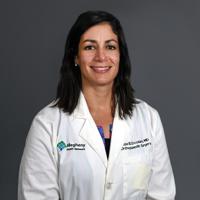
Orthopaedic Oncology Surgeon
Orthopaedic Oncology
Physician Assistant
Medical Oncology
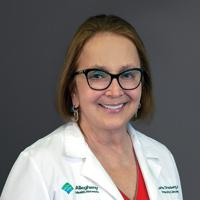
Medical Oncologist
Physician Assistant
Radiation Oncology
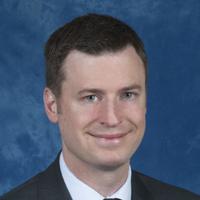
Radiation Oncologist

Radiation Oncologist
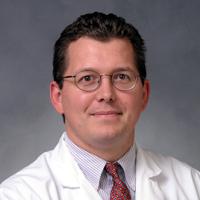
Radiation Oncologist
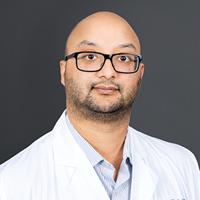
Radiation Oncologist
Pathology
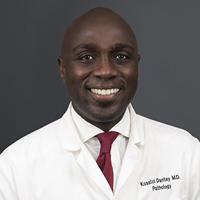
Pathologist
Pathologist
Radiology
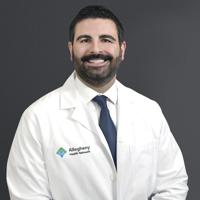
Radiologist
Nurses
Rhea Rodriguez, RN
Sarcoma Nurse Navigator
How to get care
To make an appointment you can:
- Call our scheduler: (412) 359-8614
- Schedule online
- Use MyChart and schedule with Dr. Lisa Ercolano to make an appointment
Please bring all relevant imaging on CD or through PowerShare with correlating reports for review by our team to your initial appointment.
Expect to meet the orthopaedic oncology team and get a brief overview of the treatment timeline. Your appointments may be overwhelming, so write down your questions and bring them with you to the office. Bring someone who can act as your support. These people can help you remember details discussed in the office and be there or you, if needed, throughout the appointment.
We will take care of the rest of your care:
- Our sarcoma nurse navigator will reach out and help with scheduling appointments, imaging, arranging transport, etc. The nurse navigator is an extremely useful advocate for patients, as they are able to communicate directly with the team to get your questions answered in a timely, organized fashion.
- Referrals to all the appropriate specialists will be made for patients, including medical and radiation oncology, plastic surgery, and pathology (biopsy).
- All necessary imaging will be ordered and scheduled according to your schedule and availability.
The first few steps can be overwhelming, but we try to take care of everything so you can worry less.
MyChart® is a registered trademark of Epic Systems Corporation and used with permission.
Clinical trials and research
In order to deepen our understanding of sarcoma, AHN participates in clinical trials and research including the Biomarker Moonshot Research Study and Immunonutrition Research Study. Both of the studies are focused on improving patient outcomes and treatment options. Find currently active bone and muscle clinical trials.
Cancer clinical trials and research
The AHN Cancer Institute is a pioneer in cancer research and participates in clinical trials of new medical oncology therapies that are open for patients who qualify and wish to participate. Patients are screened for consideration with ongoing clinical trials at every stage of their treatment.
What is a clinical trial?
Clinical trials are studies that try to answer questions about new ways to treat cancer with medications, radiation, or surgical techniques. Previous trials have shown how new methods of treatment improve survival and quality of life and reduce the risk of cancer returning.
You participate in a clinical trial only if you volunteer to do so and meet criteria for inclusion in the study, and you can stop participating in a trial at any time.
Who can join a clinical trial?
The plan for the trial, called a protocol, explains what the trial will do and how the study will be done. Based on the questions the research is trying to answer, each clinical trial protocol outlines specific criteria necessary to be eligible to join the trial.
Common criteria for entering a trial are:
- Having a certain type or stage of cancer.
- Having received a certain kind of therapy in the past.
- Being in a certain age group.
- Federal rules help ensure that clinical trials are run in an ethical manner, with your rights and safety protected. It’s to ensure that you’re not put at increased risk by participating in the trial, and that the results of the study are accurate and meaningful.
Conducting clinical trials helps us contribute to Cancer Moonshot — an initiative created by former President Joe Biden and the White House. The goal is to prevent more than 4 million cancer deaths by 2047 and improve the experience for people affected by cancer. We’re doing our part to join this fight by collaborating with more than 60 private companies, patient groups, academic institutions, and nonprofits.
Currently active cancer clinical trials
If you would like to participate in a clinical trial and help our innovative team discover groundbreaking cancer solutions, ask your doctor if you’re eligible to participate in one. Find currently active clinical trials that are open for participation.
Refer your patient to an AHN specialist
Referrals are sent to Allegheny Orthopaedic Associates (AOA) - Lisa Ercolano
- All outside referrals can be faxed to (412) 359-4988. Referrals should include relevant office notes and imaging of concern. When the referral is received, we will call the patient directly to schedule an appointment.
- Providers can call our office to discuss a particular case or patient with a provider directly.
- We are able to fax or share information via EPIC EMR to share any information necessary to the patient's primary doctor or an outside facility.
For more information about referring your patient to an AHN specialist, read the Independent Physician Referral FAQs.
Follow your patient's health care at AHN with EpicCare® Link™
After referring your patient to an AHN specialist, use the EpicCare Link platform to collaborate with their AHN specialist, view your patient's test results, treatment plan, and progress.
If you are new to EpicCare Link, or need to request your own EpicCare Link account, read: EpicCare Link for Patient Follow-up, for user instructions and new account request forms.
When EpicCare Link is not an option for patient's AHN medical records
If you can’t access your patient's AHN test results through the EpicCare Link platform, your patient will need to complete and submit the correct AHN Medical Records Release form, based on their state of residency. Support your patient’s request by downloading the correct medical records release form for them:
EpicCare® is a registered trademark of Epic Systems Corporation and used with permission.
EpicCare® Link™ is a trademark of Epic Systems Corporation and used with permission.

